Beyond the Barline
The Samples Have Been Changed to Protect the Innocent
I recently came across an article at the CNN Web site entitled “Digital Distortion, Art or Mischief. While the main topic of the article was “sampling” (defined in common usage as incorporating digital recordings of other artists in a new work), the author also touched upon a related subject that few discuss:
“But what happens if content—any content—is sampled and then digitally distorted so that no one can recognize the original source? Who owns this?”
The author goes on to explain that “probably no one” does, since the recordings in question are no longer recognizable. So is the issue just stealing and getting away with it, or is something more fundamental happening?
Context Is Key
What makes a recording recognizable? If we hear just one chord can we identify it? What if that chord is transposed or stretched or processed in some way that makes it unrecognizable? Is it the ones and zeros themselves (that’s all a digital recording actually is) or perhaps the context in which those ones and zeros appear? And how many zeros do we need to change to ones (or vice versa) before we’re in the clear? Mozart and Beethoven used the same chords, the same keys, and the same instruments (though Beethoven’s piano was closer to our own), but wrote very different music. Stravinsky used the same twelve notes as the Beatles. Does anyone ever confuse their music? What matters is context. Notes in relationship with other notes, and chords in relationship with other chords. And in the same way, samples in relationship with other samples.
A Concrète Example
Musique concrète is, at least in a technical sense, a predecessor of sampling. In this genre, tape recordings were cut and spliced, looped, speeded up, slowed down, and turned backwards. All the material came from preexisting recordings, yet the music wasn’t about the recordings themselves. It was about the new contexts that resulted when sounds not originally recorded together were put in juxtaposition, often altered past recognizability.
Digital Concrète
What was done with tape can now be done much more easily in the digital domain. Cutting and splicing no longer requires razor blades, and far more manipulations are possible through computer software. The French call this new musique concrète “acousmatic composition,” but I prefer the term that my friend and fellow composer Christopher Penrose coined when we were both at U.C. San Diego some twelve years ago: Digital Concrète.
I have always been fascinated with the possibilities of digital audio manipulation, especially the area of time expansion and compression. Sometimes I use recordings that I make myself (having access to a great studio is an advantage), but other times I find the sound I want on a CD.
The first extended work I composed based on CD sources, The Testimony of Light (1996), incorporates samples of a tam tam and a women’s choir. The character of the sounds makes them recognizable as being derived from these respective sources, but there is no way that anyone would be able to identify the specific recordings. Removed from context, and radically altered through granular time stretching, these sounds take on new meanings based upon their new context.
Two other works that incorporate these techniques are A Fork in the Road (1997) and Cirrus … Cumulus … Nimbus (2000). Both are for double bass and digital media, and both were written for New York bassist Brian Coughlin (of the new music group Fireworks). A Fork in the Road (excerpt) is based on several short string quartet samples, which retain a certain “string” quality. Again, I won’t identify the specific quartet or composition, and no one would ever be able to do so by ear. The context is changed and so is the meaning. I planned Cirrus … Cumulus … Nimbus (excerpt) as a “sequel.” It begins in the same way as A Fork in the Road ends, and, even more important, is based on a sample from the previous work. Since I’m borrowing from myself in this case, I even allow the sample to become momentarily recognizable at one point as a quotation from the earlier composition.
If you read my earlier columns on the 2000 Metasynth Camp (issues 6.09-6.11), you will recall the extensive digital audio manipulation I incorporated in my composition The Blue Hole (2000). Following that work, I composed another piece in Metasynth entitled In a Mirror, Dimly (2001). This work contains the most radical audio manipulations to date in any of my electronic music. The opening gesture is based on a distorted guitar riff, analyzed in the Image Synth window and then edited extensively. Absolutely none of the original guitar quality remains.

Opening of In a Mirror, Dimly
So Is It Stealing?
Is using the same chords that the Beatles used stealing? Is using the same words that Faulkner used stealing? Of course not. Context is what makes a work of art unique. When a sample retains enough of its context to be recognizable, then you had better ask permission to use it. When the sample is removed totally from its original context it becomes something new. Then the new context in which that sample finds a home is your own creation.
Also in This Series
- Ready or Not! · November 2002
- The Other Petition · August 2002
- The Samples Have Been Changed to Protect the Innocent · May 2002
- Record Execs Ate My Hard Drive! · April 2002
- And the Award Goes to… · March 2002
- Expos, From a Distance · February 2002
- My Resolution · January 2002
- Too Much Hype · November 2001
- And They’re Off! · September 2001
- Complete Archive
Reader Comments (0)
Add A Comment